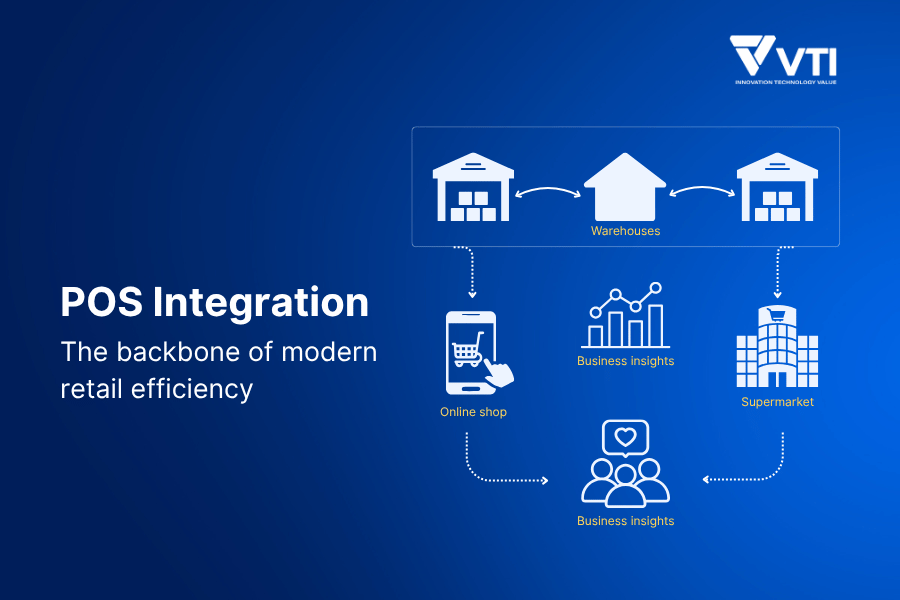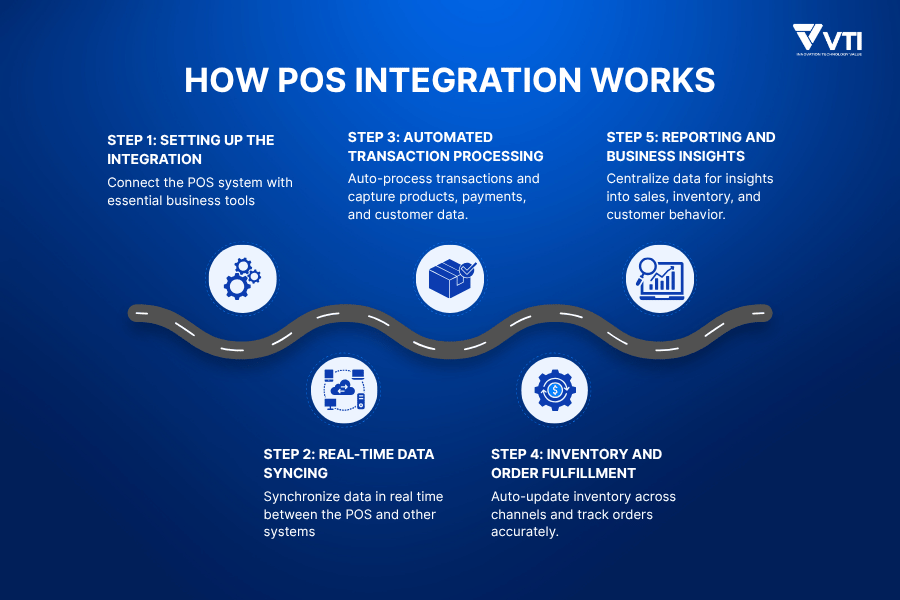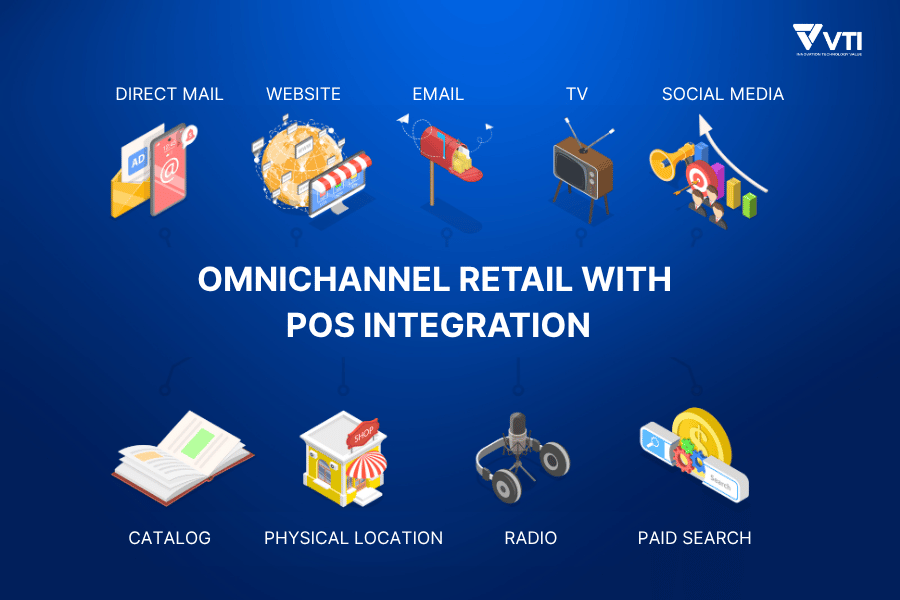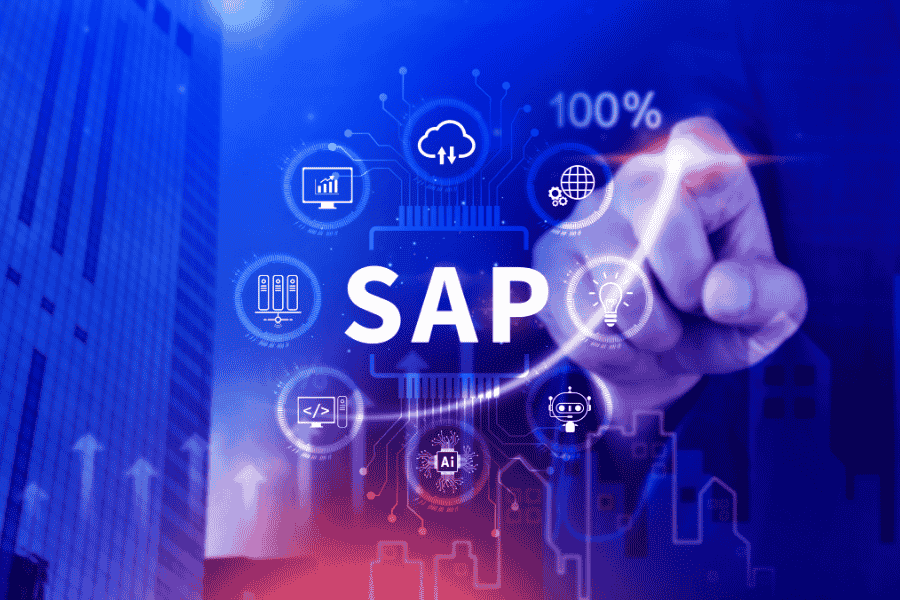
Implementing a POS integration is becoming crucial for boosting efficiency and enhancing customer experiences. The global POS market is projected to grow from $33.41 billion in 2024 to $110.22 billion by 2032, underscoring the increasing importance of integrated POS systems for businesses seeking to streamline their operations.
In retail, the shift toward omnichannel integration is driving much of this growth. Retailers are increasingly linking their online and in-store operations, offering services like buy online, pick up in-store (BOPIS) and real-time inventory syncing. By 2026, the retail point-of-sale market is expected to reach $34.4 billion, reflecting the rising demand for efficient, connected systems.
In this guide, we’ll explore how POS integration works and why it’s essential for businesses across industries to remain competitive and adaptable in 2025 and beyond. Let’s dive in!
What is POS integration?
POS integration definition
POS integration is the connection of your point-of-sale (POS) system with other essential business tools, such as inventory management systems, accounting software, CRM systems, and eCommerce platforms. By linking these systems, point of sale integrations allow data to flow seamlessly across different channels, ensuring real-time accuracy and consistency.
Business problems solved by POS integration
POS integration isn’t just a backend upgrade. It’s a game-changer for real-world business issues that retailers, restaurants, and service providers face every day. Here are some of the biggest problems POS integration helps solve:
Disconnected systems and scattered data
Running multiple systems without a unified setup causes delays, errors, and inefficiencies. With the right point of sale integrations, you can sync everything through one platform and get your tools working together in real time. No more switching tabs to find simple answers.
Inventory headaches
Stockouts, duplicate inventory counts, or selling products that aren’t actually available are every manager’s nightmare. An integrated POS keeps stock levels accurate across all your channels and store locations, giving you confidence that what customers see is what’s truly available. This is especially critical if you’re managing a point of sale ERP that ties inventory directly into procurement or warehousing systems.
Manual processes that waste time
If you’re still entering sales data by hand into accounting software or manually tracking product levels, you’re spending too much time on the basics. With point of sale software solutions, tasks like syncing inventory, processing online orders, and sending data to finance systems can all happen automatically. You and your team can focus more on service, strategy, and growth.
Inconsistent customer experience
Modern shoppers expect a seamless journey across channels. An integrated POS enables features like real-time promotions, synced loyalty points, and BOPIS. Whether they’re shopping on mobile, online, or in-store, your customers get the same experience: smooth, fast, and reliable.
Slow or inaccurate reporting
Without integrated systems, your reports can be inconsistent or lag days behind. A smart POS system pulls together sales, customer behavior, and inventory insights in one dashboard, helping you make faster, smarter decisions on the go.
Growing pains as you scale
Adding new stores, locations, or even just new tools to your tech stack becomes a headache if your systems don’t integrate. With scalable POS solutions, expansion is smooth, and tools like POS wifi and cloud-based access mean you can operate, monitor, and manage from anywhere.
Key Components of POS Integration
When it comes to POS integration, every business has its unique needs, but most integrations fall into three main categories: platform integration, location integration, and channel integration. Let’s break these down:

Platforms integration
Today, businesses use a range of tools to run efficiently, from accounting software and CRM systems to marketing platforms. By integrating these tools with your POS system, you can sync all your data automatically. For example, connecting with loyalty programs or financing tools lets you offer customers better rewards, smoother payment options, and more personalized experiences, without the need for manual updates.
This integration saves time, reduces errors, and gives you more freedom to focus on your business, knowing your systems are working together seamlessly.
Locations integration
For businesses with multiple locations, syncing data across all your sites is crucial. When one store makes a sale, your POS system automatically updates inventory, customer data, and sales records at all locations. This provides real-time visibility into each store’s activity and helps customers easily find products across different locations.
It also supports your staff. If a customer inquires about stock at a different location, they no longer need to check manually. They can access real-time data and offer instant answers.
Integration between online and offline channels
As customers shop everywhere, connecting your online and offline channels is vital. A well-integrated multichannel POS solution ensures you can manage both channels smoothly. For instance, if a customer buys an item online and uses BOPIS, the system keeps inventory synced and tracks the transaction across both channels seamlessly.
A McKinsey study shows that 56% of consumers use both online and offline channels to make purchases. By integrating your eCommerce platform with your POS, you can ensure that stock levels remain accurate, whether customers are browsing your website or shopping in-store. This integration provides a smooth and consistent experience, no matter how customers choose to shop.
>> Read more: AI POS Systems – The Key to Seamless and Smarter Retail Operations
How does POS integration work?
POS system integration works by connecting your POS system with other essential business tools, allowing them to share data in real-time. This seamless flow of information keeps all aspects of your business in sync, making operations more efficient and accurate. Here’s how it works:
Step 1: Setting up the integration
The first step is connecting your POS system with various tools, such as inventory management, CRM systems, and eCommerce platforms. This is typically done using POS API integration, which acts as the “connectors” between systems, enabling them to communicate with each other.
Step 2: Real-time data syncing
Once connected, data flows seamlessly between the POS and other systems. For instance, when a sale is made, the POS system instantly updates the inventory management system and records the transaction in your accounting software, ensuring everything stays up-to-date in real-time.

Step 3: Automated transaction processing
During a sale, whether online or in-store, the POS system captures transaction details, such as product information, payment, and customer data. This information is then sent to other systems, like payment gateways, ensuring secure and smooth transaction processing.
Step 4: Inventory and order fulfillment
When a sale occurs, inventory levels are automatically updated. If your business operates in an omnichannel model, the integration ensures that inventory is adjusted both online and offline, preventing overselling or stockouts. Orders are processed and tracked across all channels, ensuring accuracy and customer satisfaction.
Step 5: Reporting and business insights
Data from sales, inventory, and customer interactions flows into centralized reports and dashboards, giving business owners valuable insights to make informed decisions, track performance, and plan for future growth.
Benefits of POS Integration
POS system integration offers numerous benefits for both businesses and customers. As technology continues to advance, these benefits expand, helping businesses streamline operations and elevate the customer experience.
Benefits for businesses
Improved data analytics & real-time insights
One of the major advantages of retail POS integration is the ability to centralize your data in one place. With a smart POS system, you gain access to real-time analytics that provide an overview of your entire business, from sales performance to inventory levels. This enables you to spot emerging trends quickly, whether it’s a potential stock shortage, a popular product, or an opportunity to optimize staffing. Customizable dashboards allow you to focus on the most relevant data, streamlining your decision-making process and boosting efficiency.
Unified inventory management
Inventory management becomes much simpler when your POS system is integrated with your inventory tools. With real-time updates, you can avoid issues like stockouts or overselling. Integration ensures your stock levels are consistently updated across all sales channels, so whether you’re selling online or in-store, your inventory remains accurate. It also automates stock replenishment and helps you track products, pricing, and descriptions across multiple locations, saving time and reducing errors.
Enhanced security
Security is a top priority, especially when handling sensitive payment data. Point of sale integrations strengthen your security by offering features like automated encryption for data transfers and regular software updates to address potential vulnerabilities. Keeping your system up to date minimizes the risk of security breaches, protecting both your business and your customers from cyber threats.
Optimized resource allocation
POS integration reduces the need for manual data entry and minimizes the risk of errors. With point of sale software solutions handling routine tasks like inventory updates, order processing, and financial reporting, your team can stay focused on the work that really matters. Whether it’s assisting customers or optimizing business strategies, an integrated POS system helps you allocate resources more effectively.

Benefits for customers
Better product availability
For customers, availability is everything. An integrated POS system ensures that product information is consistent across all channels, whether they’re shopping online or in-store. This consistency helps prevent cart abandonment and ensures that customers can rely on seeing accurate, real-time availability when they shop. Plus, customers can easily track their purchase history across both online and offline channels, reducing the risk of ordering the wrong product or missing out on what they need.
Smooth, frictionless shopping experience
Integration provides a seamless shopping experience across both online and offline platforms. Customers don’t want to face delays or confusing processes, and a smart POS system helps eliminate friction during browsing, purchasing, and checkout. This is especially important for online transactions, where 85% of shoppers report dissatisfaction due to issues like slow checkout or inaccurate stock information. A smooth, connected experience leads to higher customer satisfaction, fostering loyalty and encouraging repeat business.
>> See POS integration in action with VTI’s Scan&Go retail app case study
Key Considerations When Choosing a POS System for Integration
Selecting the right POS system is a crucial decision for any business. It’s not just about finding a system that processes sales, it’s about finding one that integrates smoothly with the tools you use to run your business. Here are some key factors to consider when choosing a POS system for integration:
Customization needs
Every business is unique, so your POS system should be flexible enough to meet your specific requirements. Look for a point of sale software solutions that can integrate with the platforms and software you already use, whether it’s accounting, inventory management, or customer loyalty programs. The more customizable the POS system, the easier it will be to adapt as your business grows or changes. You should be able to adjust it to fit your workflow and operational needs, so you’re not forced to work around a system that doesn’t align with your business.
Vendor support and reliability
When choosing a POS system, don’t just focus on the features. Vendor support is just as critical. A reliable customer support team can be a lifesaver if you encounter technical issues. Look for 24/7 support, helpful resources like guides and FAQs, and regular system updates. You want a provider committed to keeping your POS system running smoothly and offering dependable service when you need it most.
VTI offers 24/7 support and easy access to resources to ensure your system runs smoothly at all times, with no interruptions to your business.
Integration with existing tools
Before selecting a POS system, ensure it integrates well with the software and platforms you’re already using. This includes everything from CRM systems to payment processors. The best multichannel POS solutions offer seamless integration with a wide range of tools, ensuring your workflow stays efficient and your data stays synchronized across all platforms. Avoid systems that force you to abandon the tools you already rely on, and instead look for a solution that complements your current setup.
Ease of use and training
A POS system might have all the features you need, but if it’s difficult for your team to use, it won’t be worth the investment. Look for a system with a simple interface that’s easy to navigate, even for employees who aren’t particularly tech-savvy. A user-friendly system reduces the learning curve for your team and minimizes training time. It also improves productivity by streamlining tasks like processing transactions, updating inventory, and managing customer data.
Cost and ROI
While it’s tempting to choose the cheapest option, the right POS system should offer a solid return on investment (ROI). Consider the total cost of ownership, including initial setup costs, monthly fees, hardware, and any additional integrations. Think about how the POS system will benefit your business in the long run, whether it’s improving operational efficiency, reducing manual work, or providing valuable business insights. A system that enhances operations and boosts revenue will quickly pay for itself.
Whether you’re comparing solutions or looking for a POS system for sale, make sure you’re evaluating both price and long-term value.
Conclusion
Retail POS integration is all about connecting your systems, whether it’s multiple store locations or both online and offline sales channels. When done correctly, it ties everything together, making your business operations much smoother.
The benefits are clear: you get better data, automated inventory updates, and a seamless customer experience. Whether your customers are shopping in-store or online, POS integration ensures a consistent experience across all touchpoints. Plus, with real-time updates, you can identify potential issues before they become a bigger problem.
While each POS system integration is unique, they all rely on the same core principle: using APIs to sync everything seamlessly. The result? A system that works for you, helping your business run more efficiently and intelligently.
At VTI, we’ve built our multichannel POS solution with this exact need in mind. Our system is designed to be flexible and tailored to your business. We’ve worked with major brands in Japan and Korea, helping them create customized solutions that fit perfectly with their workflows. This ensures our POS system grows with you, no matter how your business changes.
Looking for customized POS solutions with advanced AI integration and seamless device connectivity? That’s exactly what VTI specializes in. If you’re exploring options for a POS system for sale or need help customizing one to your workflow, VTI is here to help. Reach out today and let’s talk.
![[FREE EBOOK] Strategic Vietnam IT Outsourcing: Optimizing Cost and Workforce Efficiency](https://vti.com.vn/wp-content/uploads/2023/08/cover-mockup_ebook-it-outsourcing-20230331111004-ynxdn-1.png)




